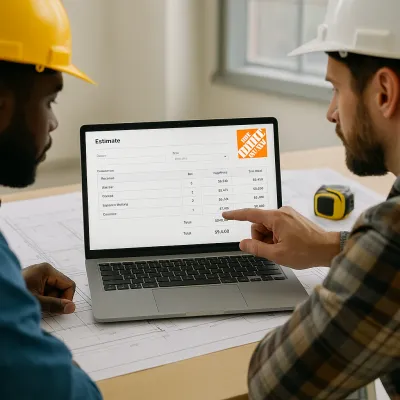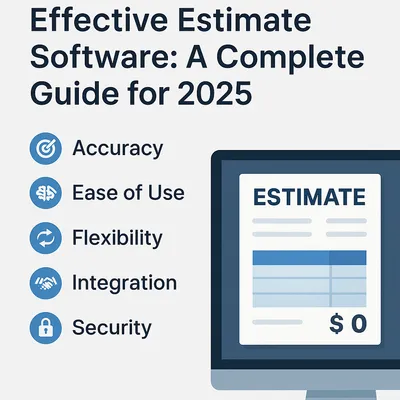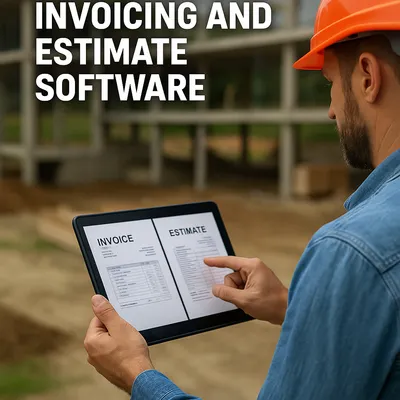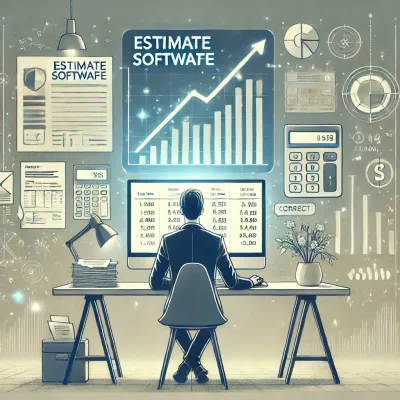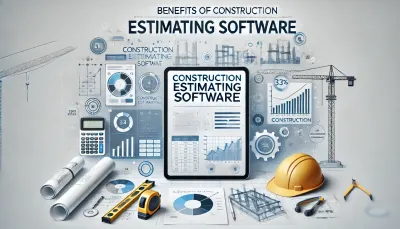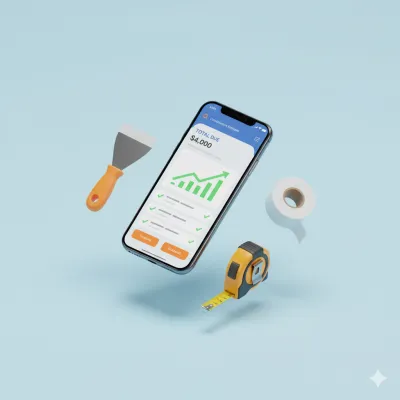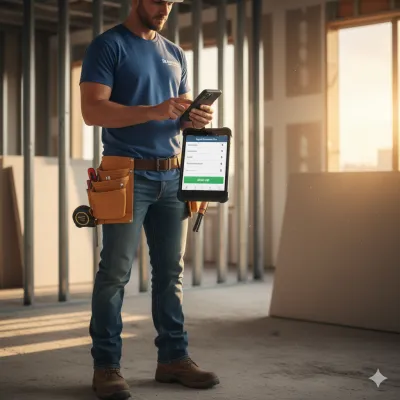Key features contractors should look for in estimate software
Explore essential features contractors need in estimating software. Simplify workflows, enhance accuracy, and boost profitability for your business.
by
Quickadmin • 12/22/2024
Key features contractors should look for in estimate software
In the fast-paced construction world, accurate estimates can make or break a project. That’s why last week, we shared with you 5 mistakes you need to avoid when creating estimates for clients.
Whether you’re bidding for new contracts, managing budgets, or forecasting timelines, having the right tools to create precise and reliable estimates is essential for success. For contractors, this often means leveraging modern estimate software that simplifies the process, enhances accuracy, and improves efficiency.
But with so many options available on the market, how can contractors determine which software best suits their needs? The key lies in understanding the features that truly make a difference in day-to-day operations.
In this article, we’ll break down the essential features contractors should prioritize when evaluating estimate software to ensure it delivers value, saves time, and boosts profitability. Whether you’re a small business owner or managing a large construction team, this guide will help you make an informed decision.
Why does choosing the right estimate software matter?
In the construction industry, where competition is fierce and profit margins can be thin, accurate cost estimation is critical for success. A well-prepared estimate serves as the foundation for project planning, budgeting, and client trust.
Despite its importance, many contractors still rely on outdated tools or manual methods for creating estimates. These approaches are not only time-consuming but also prone to errors that can lead to significant issues down the line, such as budget overruns, project delays, or disputes with clients.
This is where estimate software comes into play. By streamlining the estimation process and providing tools that improve accuracy, modern software can help contractors stay competitive, save time, and reduce costly mistakes.
However, not all estimate software is created equal, and choosing the right one requires careful consideration of its features and compatibility with your business operations. Investing in the right software isn’t just a short-term convenience—it’s a long-term strategy to enhance efficiency, professionalism, and profitability.
Key features to prioritize in estimate software
As we mentioned, selecting the right estimate software is about more than just ticking off a list of features, it’s about finding a solution that aligns with your business’s unique needs.
With the right tools in place, contractors can create accurate estimates faster, manage their workflows more effectively, and improve communication with clients and teams. Hereunder, we’ll mention the most important features to look for in estimate software and explain why they’re essential for your business’s success.
1.- User-friendly interface and ease of use
An intuitive interface is one of the most critical aspects of any software. For contractors, who often juggle multiple tasks at once, ease of use can make all the difference. A complex or clunky platform may require lengthy training sessions, taking valuable time away from running your business.
The best estimate software offers a clean, straightforward interface that even less tech-savvy team members can navigate easily. Features like drag-and-drop functionality, simple input forms, and guided workflows can significantly streamline the process of creating and managing estimates.
2.- Customizable templates and reporting tools
No two projects are the same, and your estimating software should reflect that. Customizable templates allow contractors to tailor estimates to fit the specific needs of each project, from material and labor costs to overhead and contingencies. This flexibility ensures that your estimates are both professional and relevant to the scope of work.
Equally important are robust reporting tools, even more so when they are detailed. These can help contractors break down costs for clients, making your proposals more transparent and credible. Internally, reports provide insights into project profitability and help track budget performance over time, enabling you to identify trends and areas for improvement.
3.- Cost estimation and budgeting accuracy
The core function of any estimate software is its ability to calculate costs with precision. Look for software that allows detailed cost breakdowns, including materials, labor, equipment, and overhead expenses. The software should also factor in variables such as local labor rates, supplier pricing, and taxes to provide a comprehensive and accurate estimate.
Advanced features like automatic updates for material costs or built-in cost libraries can be game-changers, saving you hours of manual data entry. By delivering highly accurate estimates, the software helps avoid budget overruns and ensures your bids are competitive without undercutting your bottom line.
4.- Integration with project management tools
In construction, estimates are not standalone documents—they’re a key part of the larger project management process. Estimate software that integrates seamlessly with project management tools can significantly enhance efficiency.
For example, linking estimates to scheduling software allows contractors to allocate resources based on the approved budget. Accounting software or time-tracking systems ensure consistency and eliminate duplication of effort. This connected approach ensures that all aspects of a project —from bidding to execution— are aligned, reducing the risk of miscommunication and costly errors.
4.- Cloud-based access and mobile compatibility
For contractors who frequently work on-site, mobility is essential. Cloud-based estimate software allows you to access your estimates and project data from anywhere, whether you’re in the office, on-site, or meeting with a client.
Mobile compatibility is especially useful for fieldwork, enabling contractors to make adjustments in real time, share updates with team members, or even generate new estimates while on location. It ensures productivity and responsiveness no matter where you are.
5.- Scalability and multi-user support
As your business grows, your software needs to grow with you. Scalability is a key feature for contractors who want to expand their operations without constantly switching tools. Look for software that can handle increased workloads, larger projects, and more complex requirements as your business evolves.
As well as multi-user support is another critical feature, especially for larger teams. The software should allow multiple users to access and work on estimates simultaneously, with role-based permissions to ensure data security. This collaborative functionality is vital for improving teamwork and streamlining workflows across departments.
6.- Customer support and training resources
Even the best software can present challenges during implementation or daily use. That’s why strong customer support and training resources are essential. Look for providers that offer reliable support channels, such as live chat, email, or phone assistance, to help you resolve issues quickly.
Training resources, including tutorials, webinars, and documentation, can help you and your team get up to speed faster and make the most of the software’s features. A provider that invests in your success through robust support and training is worth prioritizing when making your decision.
Now that you’ve learned more about estimate software, share this article on your social media and stay tuned to our blog for more information regarding estimations on any industry.





